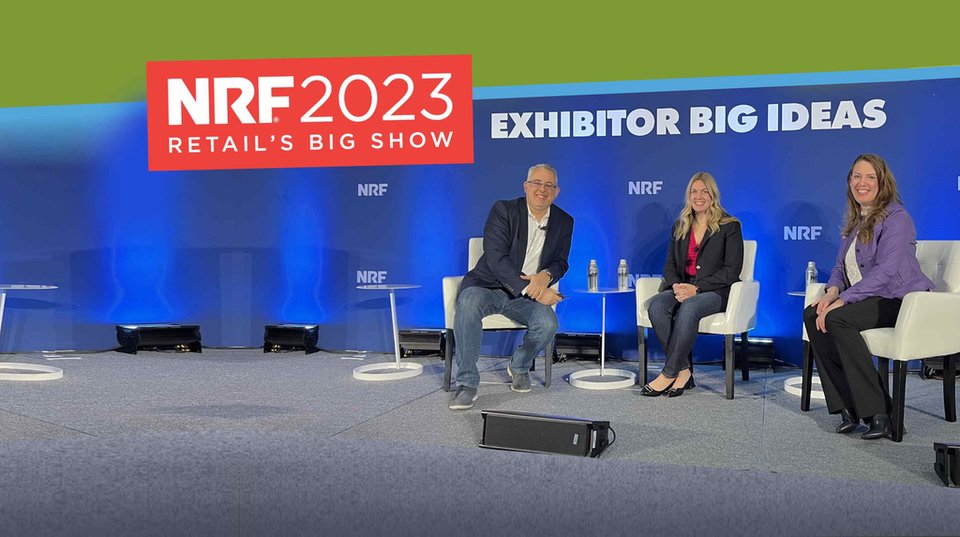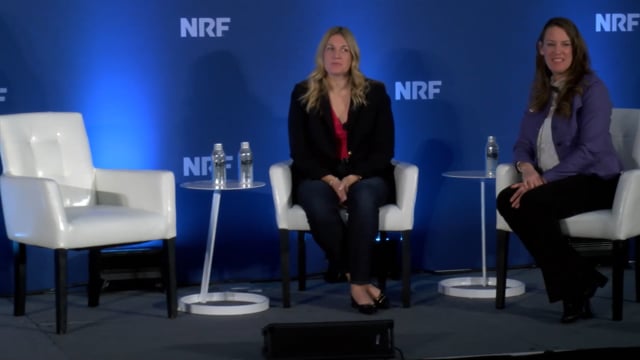
Engagement where it matters: Connecting your omnichannel message from click to brick
Produced by Vestcom
Shock Torem, SVP of Media Solutions for Vestcom opened the session by reminding everyone of the scale of the Super Bowl, which attracts 112 million viewers annually. He then revealed that marketers have access to an audience twice the size of the Super Bowl audience every week in the US market. The number represents the shoppers walking up and down the aisles of grocery stores in the US market on a weekly basis. The challenge now is that consumers are inundated with marketing signals that they have become desensitized to them. The real challenge, therefore, is not only how to get a message out at scale but also how to do it at a moment when consumers are receptive to the brand message. This is where retail media networks come into play. The majority of tactics that are activated within these networks are digital tactics, but the behavior of these users is occurring in-store. Over 90% of the transaction volume still occurs in brick and mortar retailers, so marketers should complement their digital investment by continuing the conversation with shoppers until the point where they are making that purchase decision.
As marketers, the goal is to communicate a key message across multiple tactics to drive conversion of a product. Rebecca Crosier, Team Lead, Shopper Marketing and Merchandising at Reckitt, spoke about how Reckitt worked with Vestcom shelfAdz® to propel LYSOL® and MUCINEX® marketing messages through the marketing funnel to the shelf edge at the in-store point of decision at retailers. Vestcom provided a test vs control methodology to prove that the reminder at the shelf was worth the investment. New snacks were promoted through multiple segments in one aisle, with each message having its own funnel. One execution offered $5 cashback direct to a shopper’s Venmo account. She discussed the impact communication at shelf can have to remind, educate, or disrupt the purchase hierarchy in cluttered, confusing, commoditized aisles. This advertising element is connected to individual item price tags and able to hit campaign objectives using brand equity, new product callouts or promotional incentive overlays. Secondary placement is used to drive people to expand or build penetration. Rebecca expressed her excitement to test new technologies and innovations to improve the process.
Kim Humann, who leads the shopper marketing for J&J, spoke about two programs where her team used Vestcom tags to meet different business objectives. The first program was for the allergy product, and the second was a portfolio program to get Walgreens shoppers to build their baskets. For the allergy product, the aim was to convert shoppers during the crucial spring allergy season when the purchases skew towards in-store. Kim coordinated with her team and ran her digital media to drive traffic to Walgreens, while also using ad shelf communication to reinforce the product’s benefit. For the second program, Kim aimed to communicate the moms and the college students who are getting ready to go back to school in July/August time frame and making sure they're stocking up on their day to day essentials. The initiative here is to get the Walgreen shopper to build their baskets and the challenge here is how to communicate effectively across the store, especially when you have hundreds of SKUs across ten different categories. Vestcom shelfAdz® helped tag over 50 different SKUs to highlight them to shoppers as they went around the store. Both programs ran for four weeks, and the results were fantastic. The programs aimed to win the crucial seasons, broadcast to shoppers about the in-store promotion and execute programs in categories where in-store decisions are more important.




